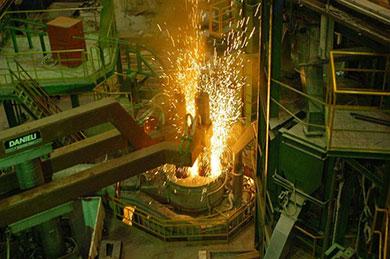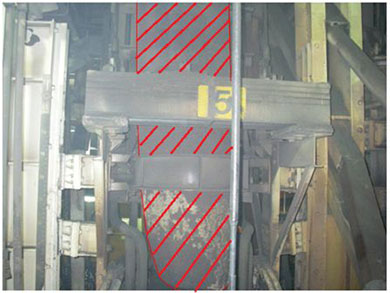 As part of a measurement campaign targeted toward carbon electrodes in reduction furnaces, Rio Tinto Iron & Titanium wanted to follow up on its different electrode consumption mechanisms and optimize them, in order to better identify its electrode consumption reduction needs, and analyze the different possible solutions from an economic standpoint.
As part of a measurement campaign targeted toward carbon electrodes in reduction furnaces, Rio Tinto Iron & Titanium wanted to follow up on its different electrode consumption mechanisms and optimize them, in order to better identify its electrode consumption reduction needs, and analyze the different possible solutions from an economic standpoint.
Rio Tinto wanted to study the variation in electrode wear levels according to several parameters, including carbon vaporization at the tip of the electrode and its reaction with the mineral. A previous study conducted in 1989 had made it possible to establish a wear pattern for electrodes. The current research team wanted to compare the 2012 results with those from 1989, but also optimize the parameters in order to reduce electrode consumption, since those are extremely pricey. To do that, they needed a typical electrode profile, at different stages of its useful life.

 First, the team needed to find an efficient, repeatable measurement method. Photography or direct measurement methods had been eliminated from the start, since the chosen method needed to be reproduced in a factory. Indeed, in order to minimize its downtime and productivity loss, Rio Tinto measures its electrodes (which must stay in place) during the maintenance shutdowns of its reduction furnaces. Rio Tinto thus had to take several constraints into account: time (quick measurements), space (very restrained in the furnace), safety (for the staff) as well as accuracy (to make sure that the study was valid).
First, the team needed to find an efficient, repeatable measurement method. Photography or direct measurement methods had been eliminated from the start, since the chosen method needed to be reproduced in a factory. Indeed, in order to minimize its downtime and productivity loss, Rio Tinto measures its electrodes (which must stay in place) during the maintenance shutdowns of its reduction furnaces. Rio Tinto thus had to take several constraints into account: time (quick measurements), space (very restrained in the furnace), safety (for the staff) as well as accuracy (to make sure that the study was valid).
After analyzing all the existing measurement technologies, Rio Tinto selected the Creaform Handyscan 3D scanner, since it complied with the requirements of the projects, and because it was also very easy to use.
Steps
- While the furnace was shutdown, the electrode needed to be taken out from its cavity, but it was very hard to reach given the bulk and tight space. But thanks to the small size of the Handyscan 3D, the Creaform application engineer was able to scan the electrode very accurately in only 1 hour.
- The file was then post-treated and imported into the analysis software, in order to create sections that could be compared to those measured in 1989.
Benefits
The Handyscan 3D self-positioned referencing system made it possible to produce a 360º scan of the electrode, despite the space challenges. The dynamic referencing system also generated extremely accurate data, despite the rather hostile environment. Since the optical positioning system was locked onto the part to be scanned, the vibrations – inevitable and pervasive in any foundry – had no impact on the measurement accuracy whatsoever. Furthermore, the quick measurements produced by the scanner enabled the applications engineer to measure a greater number of electrodes, which provided Rio Tinto with a greater sampling, more accurate analysis, as well as considerable time and money savings!
Before, the electrode had to be uninstalled and sent to the Rio Tinto Technology Center, which lengthened the furnace shutdown time and increased workforce-related costs. The fact that Creaform also has subsidiaries all across the globe makes us especially suited to answer the needs of large multinational corporations. Rio Tinto was so satisfied with the results of the study that they decided to deploy it in other divisions, which enabled Creaform to reproduce this project on a new continent: Africa!
